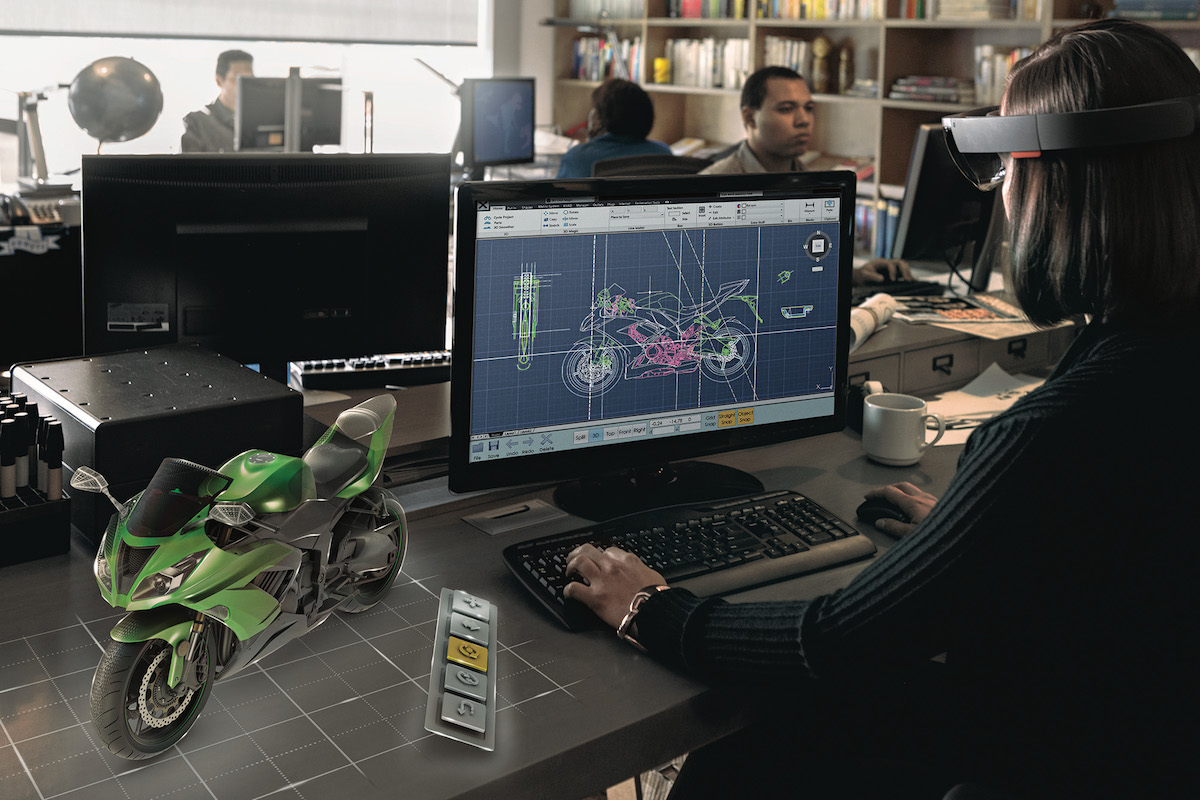The software and hardware components for virtual reality (VR) and augmented reality (AR) have existed for some time. Despite this, mixed reality (MR) experiences have only recently emerged, marking a new, sophisticated era for the technology.
Bringing 3D holographic content to life in the physical world, MR combines holograms with real-world context and scale, enabling users to engage with digital content while simultaneously interacting with the physical world around them.
Organisations may be led to believe that the applications of MR, which include a combination of VR and AR, are confined to the realm of innovative tech companies such as Google, Apple or Facebook. The reality however is very different.
The race is already on to commercialise these technologies and create the next generation of digital experiences. Since launching in 2016, Microsoft’s self-contained MR headset, HoloLens, has driven growth of MR adoption across industries, facilitating new ways of working. From designing the new Mars rover, to helping architects visualise buildings in 3D, HoloLens has already shown potential in driving innovation.
Showcasing the opportunity for MR, the success of these implementations has propelled businesses to begin experimenting with new ways to embed this technology into business processes and employee workflows.
The opportunities are limitless. MR devices can vastly increase employees’ knowledge of the world around them by overlaying information in the context of the real world. Consider, for example, the possibilities of viewing a correctly scaled 3D model of a product in real life, comparing it with prior versions and modifying it in real time.
MR can also facilitate collaboration between remote teams. Creating an immersive and live experience, MR allows employees to provide better guidance and direction, and can even create the opportunity for them to virtually stand on a physical machine floor to help a colleague fix a problem from halfway around the globe. MR represents a new and digitally expansive experience for businesses.
The following applications provide an insight into the different opportunities for business processes and employee performance:
People-first applications
Many applications were originally created to display data or information from a centralised location. Instead of arbitrarily providing data to the worker, MR applications have the opportunity to display extremely context-relevant information in a physical space.
Research from Accenture confirms that immersing a worker deeper into the content enables them to create a stronger connection with it. Displaying information in a contextually relevant manner (as opposed to flat on a dashboard screen) will accelerate the pace of decisions in a people-first way.
Sharing real-world virtual workspace
With MR, team members can be networked into a shared virtual world overlaying the physical. Bringing together multiple MR devices in a shared space, made possible by the real-time mapping and image recognition capabilities, teams can work collaboratively on the virtual objects and have the items interact with each other and the real word.
Remote experts
MR offers a hands-free method to access an expert in a quick and cost-efficient manner. For example, an oil and gas technician working on a drilling rig in the middle of the ocean can send a video feed of what they see, while an expert can annotate the 3D world displayed on the MR headset to direct the task. This capability would not only reduce the risk of errors, but also make the experts more accessible for different types of support as required.
As technologies mature and devices become more accessible to businesses, MR will have the power to change how people work, communicate and relate to the world. As we are still in the infancy of its deployment, it is critical for organisations to incorporate lessons learned from mobility, VR and AR and consider how MR can provide the most value within their business models.
Much like smart devices before it, MR will continue to evolve in applications and use cases, providing an exciting opportunity for companies willing to invest in this technology now. The promise of MR technology is very real, and harnessing those capabilities will give leading organisations a strong advantage.







